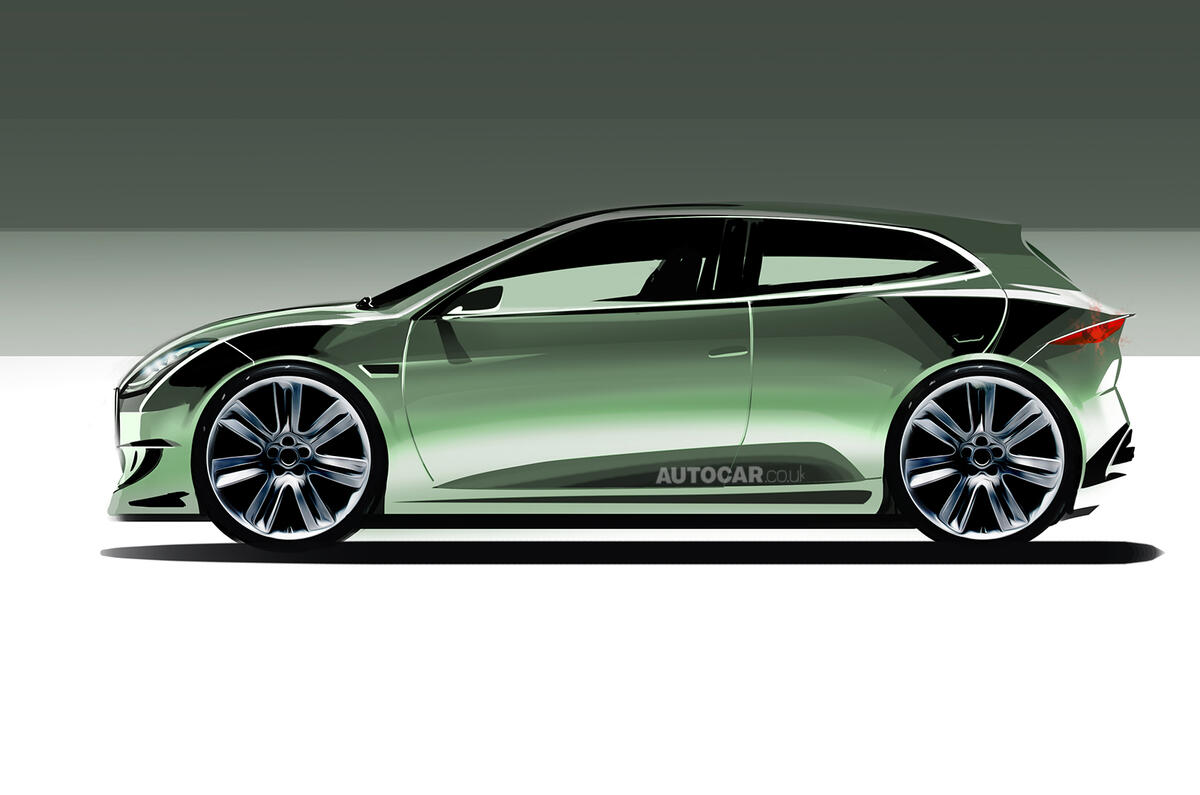Tentative plans for a super-frugal front-drive Jaguar are likely to be re-examined in light of the threat of increasingly stringent EU CO2 regulations, according to company insiders.
Although the firm is working flat out on bringing its new compact saloon and crossover models to market, even those frugal machines (the cleanest versions have a 99g/km target) might not be enough to lower Jaguar Land Rover’s fleet average to meet 2020 regulations — not to mention even stricter subsequent targets still to be set.
In the same way that BMW is rolling out a huge programme of economical front-drive cars under the BMW and Mini brands (which could account for 40 per cent of BMW’s overall output by the end of the decade), JLR is again eyeing a series of small front-drive models that could be sold in larger numbers.
The problem is that investment in what would certainly be a new, unique steel architecture would need to be huge, and justifying commensurately bold retail prices — and therefore decent profit margins — from small cars is notoriously difficult. Some, however, are arguing that JLR might have no choice but to build a rival to Mercedes’ new compact models and BMW’s upcoming front-drive 1-series additions.
This is because, by 2020, the EU wants to see the average CO2 output from a manufacturer’s model range pegged to just 95g/km. The laws were voted through the European Parliament in April. Although manufacturers who build less than 300,000 cars a year can apply a less stern metric, JLR is likely to be producing as many as 700,000 cars, thereby falling under the 95g/km legislation. And because JLR sells significant numbers of large SUVs, it is likely to seriously struggle to meet the targets.
However, the European Commission is going to set even more rigorous post-2020 targets by late 2014. Clearly these targets will demand even lower emissions, and some EU politicians are already lobbying for targets of 68-78g/km of CO2. Experts say driving an electric car fully charged using the European mains equates to around 75g/km of CO2 emissions via the power generation infrastructure.
The proposals have already drawn strong criticism from the bosses of Volkswagen and BMW. Speaking to the German press, BMW chief Norbert Reithofer described them as “entirely political aspirations; technology analysis and feasibility have nothing to do with it”.
He said “tens of billions of euros” had already been spent attempting to hit the 95g/km target and warned that the European car industry didn’t have the strength to further drive down average CO2 below EV-equivalent levels. Trying to build such cars could ultimately be unprofitable and hobble the European industry in its attempts to compete with global manufacturers not subject to the same rules.





Join the debate
Add your comment
Car in pic looks familiar
- seen this before, called the RDX60 - see link for pic:
https://www.facebook.com/pages/MG-Sports-and-Racing/236423539785821#!/photo.php?fbid=453098251451681&set=a.438718559556317.1073741826.236423539785821&type=3&theater
Also on a smaller point - Tata/Jag/Land Rover don't own the Rover brand either. BMW sold it to Ford, who at the time owned Jag and LR.
They didn't want it used on cars that may be confused with Landie's in the US (where they are nicknamed Rovers)
MGSportsandRacing wrote: -
Ford sold the Rover trade mark when they sold JLR to TATA.
Shooting brake please!
Make it the traditional shooting brake body style and I will be all over it! Jaguar really needs a truely innovative and unique model to stand out from the crowd and attract new buyers.
But please don't let this be another Ford X-type afterthought.
JLR
JLR are going to make the same mistakes as the old school British car industry. They need to jump on the same bandwagon as VW/AUDI,BMW and Merc and get smaller premium vehicles produced. They have the Tata factories around the world as well as the JLR factories in the UK to produce these cars. JLR can use the Rover name on the smaller front wheel drive vehicles if they feel that front wheel would blacken the Jaguar name. These front wheel drive Rover vehicles can then be produced in the Tata India factories or the new JLR China factories at a lot less cost but sell at a premium price just like BMW and Audi do. To then save costs on develping Tata vehicles they can use the old JLR/Rover chasis when no longer needed on new Tata vehicles.